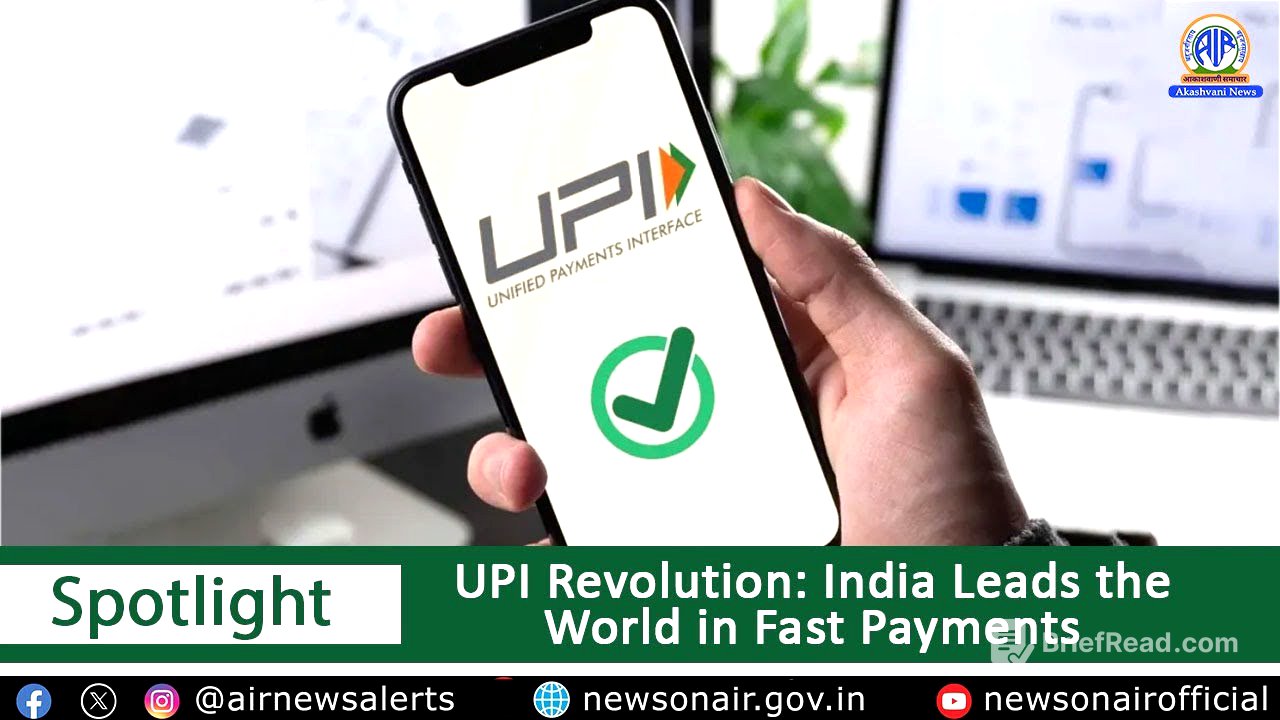TLDR;
This episode of Spotlight discusses the UPI (Unified Payments Interface) revolution in India, highlighting its impact on financial inclusion, economic growth, and global recognition. Launched in 2016, UPI has become a status symbol for Indians, processing millions of transactions daily. The discussion covers the digital groundwork that enabled UPI, its advantages over digital wallets, safety measures, and its expansion into international markets.
- UPI facilitates 640 million+ transactions daily, contributing to India's GDP.
- The JAM trinity (Jandhan, Aadhaar, and Mobile) significantly contributed to UPI's evolution.
- UPI is expanding globally, with potential to become a global payment platform.
Introduction to UPI Revolution [0:03]
The program "Spotlight" features a discussion on India's UPI revolution with economic analyst Shhat Kohli. UPI was launched in 2016 with the goals of financial inclusion and opening bank accounts for every citizen. The initiative has evolved significantly, becoming a revolution with substantial transaction volumes.
UPI's Impact and Growth [0:51]
UPI processes approximately 640 million transactions daily, amounting to 1,900 crore transactions monthly, with a value of 24 lakh crore rupees per month. Anticipating a 32% growth, it's expected to surpass 25 lakh crore monthly. Annually, UPI transactions could reach 300 lakh crore rupees, nearing India's GDP value. Every 1% increase in UPI transactions impacts GDP by 0.03%. The Prime Minister has recognised UPI as a status symbol for Indians.
Digital Groundwork and Key Enablers [4:23]
The National Payment Corporation of India (NPCI) and the Reserve Bank of India (RBI) are crucial in controlling and evolving the UPI system. The JAM trinity (Jandhan, Aadhaar, and Mobile) has significantly contributed to UPI's evolution, particularly the Aadhaar-mobile linkage. Despite only 66 crore smartphone users out of a population of 142 crore, 85.5% of households have at least one smartphone, aiding UPI penetration. UPI's ease of use has made it popular for even the smallest transactions.
UPI vs. Digital Wallets and Traditional Payments [7:44]
UPI differs from digital wallets as it transfers money directly from one bank account to another, eliminating the need to park money in a wallet. This addresses safety concerns associated with wallets being hacked or unreachable. UPI has overshadowed traditional payment methods like checks, debit cards, credit cards, and net banking. The Jandhan scheme, aimed at financial inclusion, has become vital due to the JAM trinity, despite initial skepticism about its utility.
Data Safety and Security Measures [10:38]
UPI, managed by NPCI and RBI, employs comprehensive firewalls and data protection measures. Data breaches are often due to user negligence. Users should be careful while using UPI and during KYC processes to avoid errors in Aadhaar, PAN, or bank account details.
Global Expansion and Future Vision [12:17]
UPI is live in seven countries, including the UAE, Singapore, Bhutan, Nepal, Sri Lanka, and France, marking its entry into Europe. The vision is for UPI to become a global payment platform, with the Prime Minister promoting it internationally. UPI is considered India's gift to the world, with potential for widespread adoption and recognition for its efficiency and safety.









